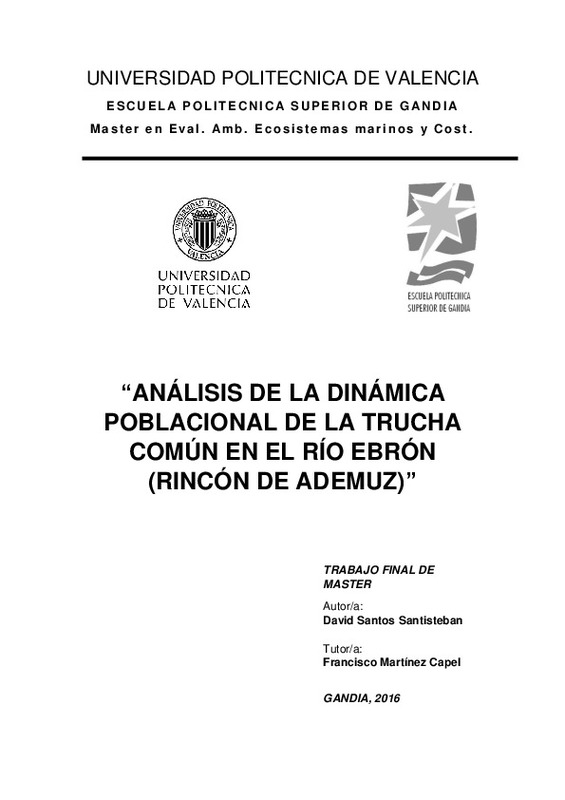JavaScript is disabled for your browser. Some features of this site may not work without it.
Buscar en RiuNet
Listar
Mi cuenta
Estadísticas
Ayuda RiuNet
Admin. UPV
Análisis de la dinámica poblacional de la trucha común en el río Ebrón (Rincón de Ademuz)
Mostrar el registro completo del ítem
Santos Santisteban, D. (2016). Análisis de la dinámica poblacional de la trucha común en el río Ebrón (Rincón de Ademuz). Universitat Politècnica de València. http://hdl.handle.net/10251/77005
Por favor, use este identificador para citar o enlazar este ítem: http://hdl.handle.net/10251/77005
Ficheros en el ítem
Metadatos del ítem
| Título: | Análisis de la dinámica poblacional de la trucha común en el río Ebrón (Rincón de Ademuz) | |||
| Autor: | Santos Santisteban, David | |||
| Director(es): | ||||
| Entidad UPV: |
|
|||
| Fecha acto/lectura: |
|
|||
| Resumen: |
La trucha común (Salmo trutta L.) es una de las especies económicamente más importantes
en los ríos mediterráneos, cuya presencia en la Comunidad Valenciana se reduce a un número
escaso, puesto que únicamente solo habita ...[+]
The brown trout (Salmo trutta L.) is one of the most important fish species in the Mediterranean
river ecosystems. Its presence is very limited in the Valencian Community, because it only
inhabits 5 rivers. This piece ...[+]
|
|||
| Palabras clave: |
|
|||
| Derechos de uso: | Reserva de todos los derechos | |||
| Editorial: |
|
|||
| Titulación: |
|
|||
| Tipo: |
|
recommendations
Este ítem aparece en la(s) siguiente(s) colección(ones)
-
EPSG - Trabajos académicos [5004]
Escuela Politécnica Superior de Gandia







